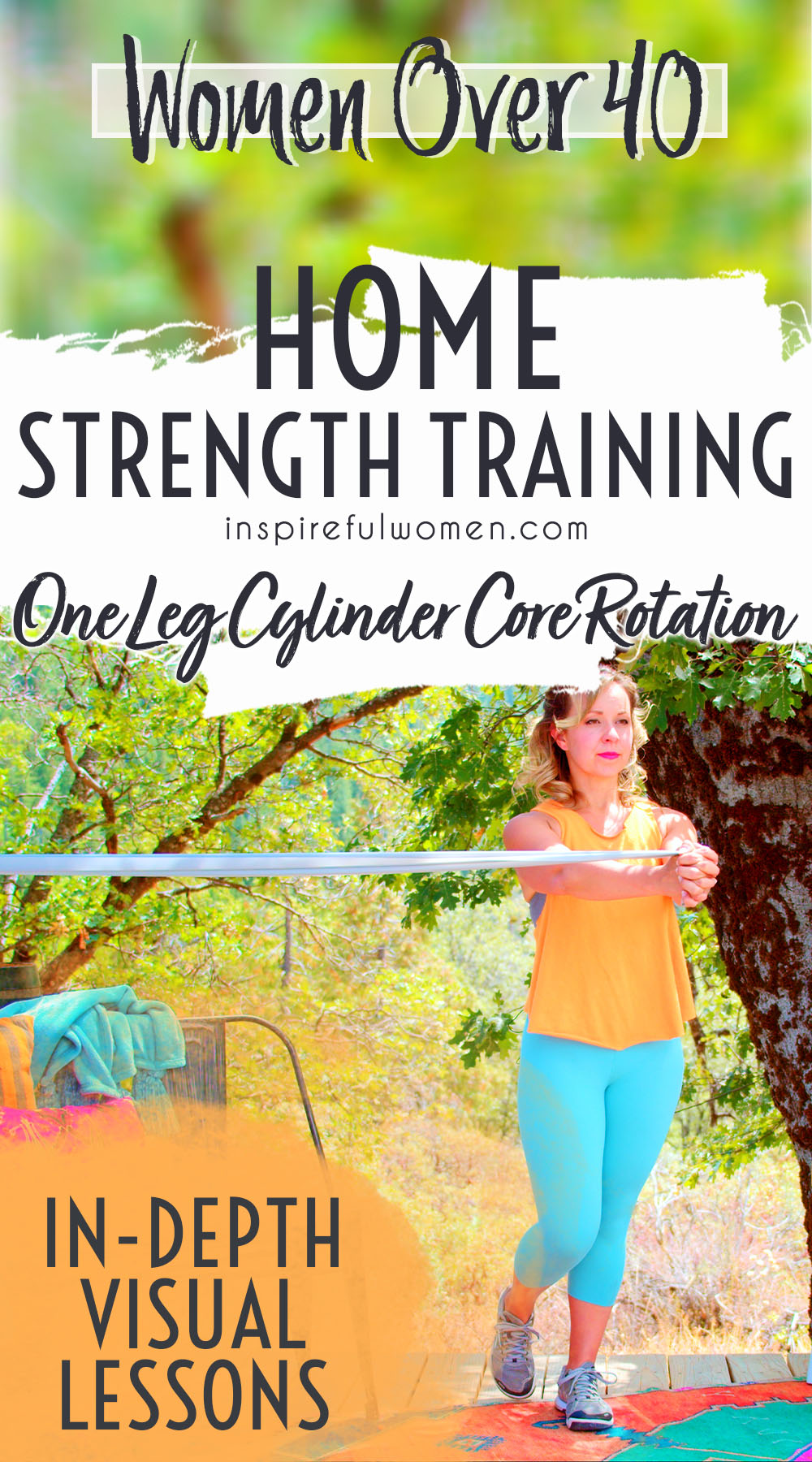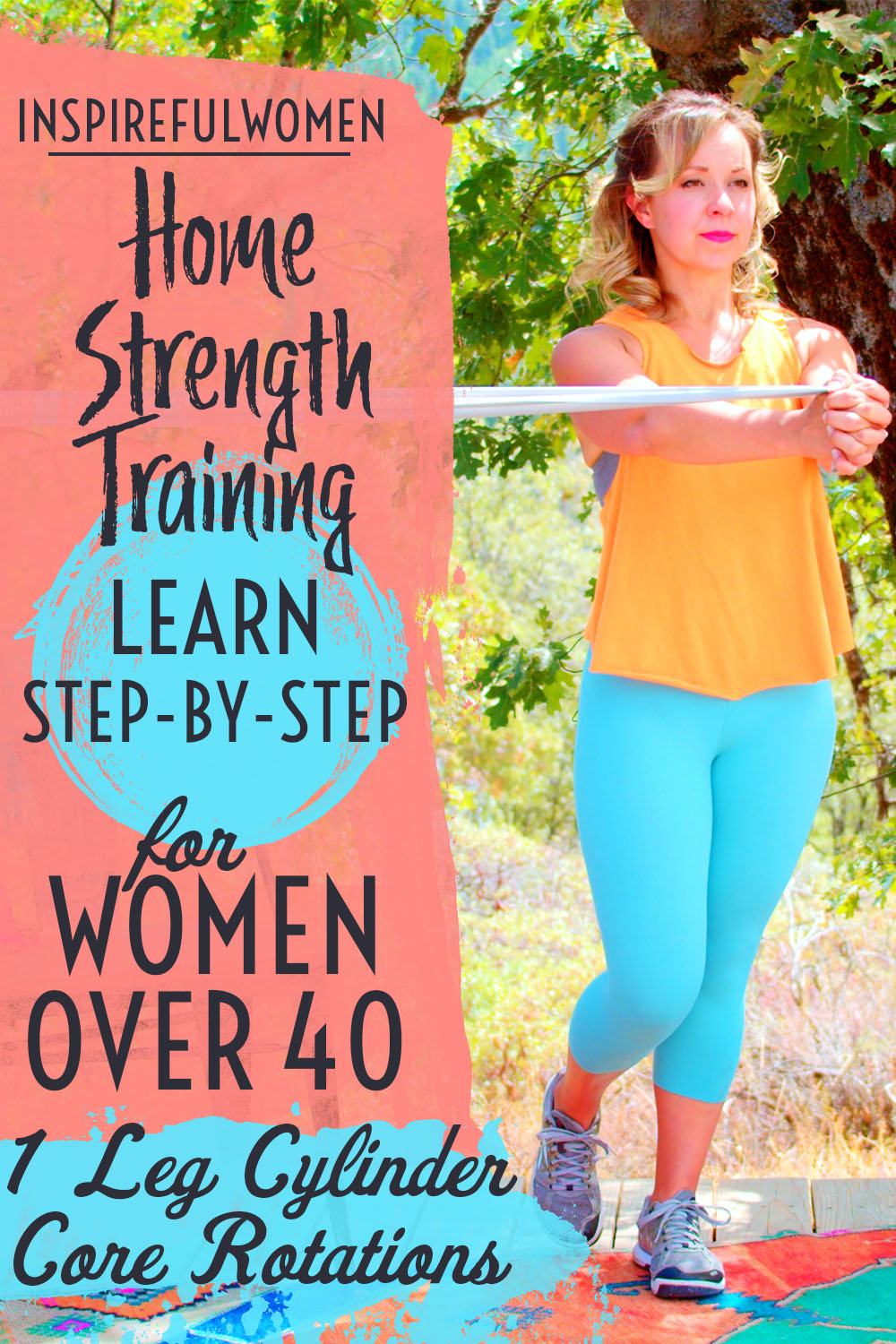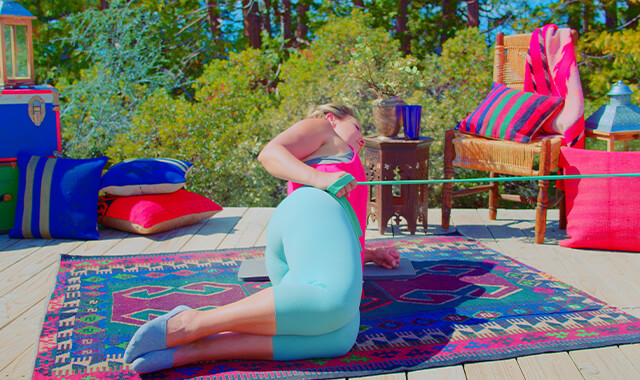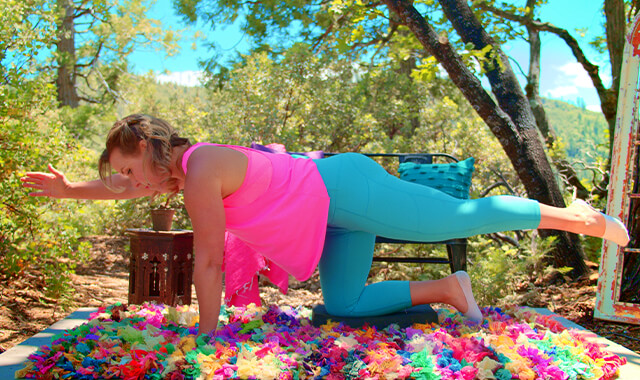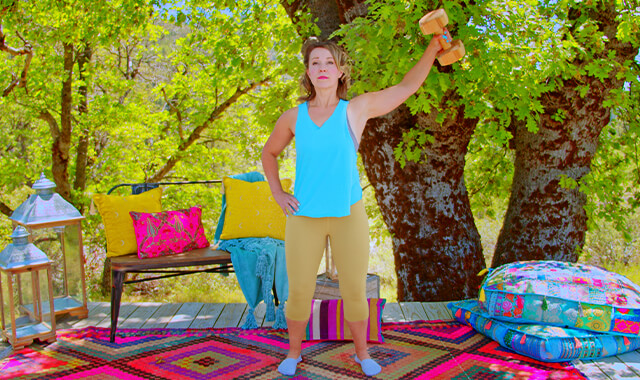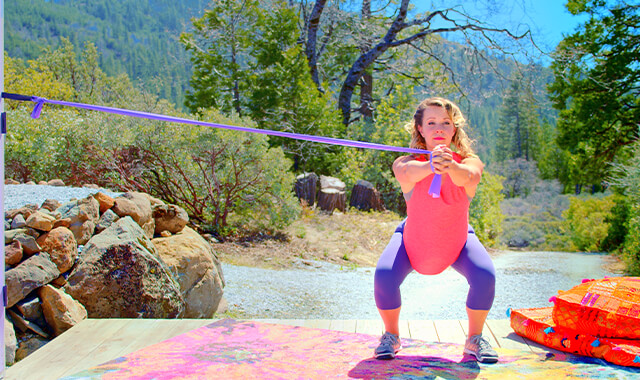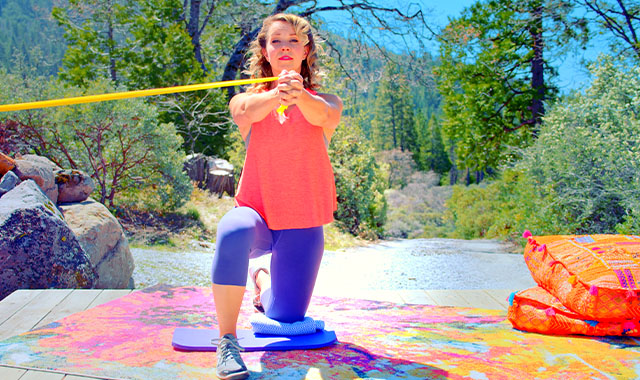standing single leg band torso Rotations
How to Do the Standing Single Leg Band Torso Rotations | In-Depth Guide [VISUAL LEARNERS] Beginner
Proper Form & Common Mistakes | Home Resistance Training
WHAT DO YOU WANT TO SEE?
QUICK DEMO
QUICK DEMO
MUSCLES THIS WORKS
MUSCLES
MAIN MUSCLES WORKED IN the Single Leg Torso Rotation
Obliques
OTHER MUSCLES WORKED:
- Transverse abdominis
- Quadratus lumborum
- Erector spinae
- Multifidi
- Gluteus maximus
- Deep hip rotators
STARTING POINTERS
Starting Pointers
WHAT WE'RE DOING TODAY
ALL WE'RE DOING:
This one's tricky, watch the video for sure!
This variation of horizontal torso rotations is a great and fun way to work on balance, while still working your trunk muscle at the same time, especially our obliques. While this movement is usually done at the gym with a cable machine, we can easily do this at home with a resistance band instead. This trains our abs and core muscles in a very functional way, which is how to properly rotate our core- from the hips, not the spine. Definitely learn the double leg version of this exercise first!
The exercise is done standing on one leg. The muscles all the way from the feet (even the toe muscles), to the neck will be working. Start this exercise without using a band until you are able to keep nice and steady. The standing leg will initiate the movement by using the deep rotating muscles to rotate the torso around the standing hip. If you use too much resistance the larger muscles of the hips will start trying to help with the movement. Try to avoid the temptation to use too much resistance - focus on control and balance.
One of the benefits of this exercise is that it will work the hip rotators. The muscles that rotate the hip joint rotators can be thought of as the rotator cuff muscles of the hip. Just like the four muscles that make up the rotator cuff that stabilize and rotate the shoulder joint, the hip rotators stabilize and rotate the hip joint. Most exercises focus on the larger movements of the hip joint - moving the leg forward, backwards or out to the side. There are fewer exercises that train the muscles to stabilize and rotate the hip. It is important to train the muscles this way for the health of the hip joint - they need to keep the ball of the thigh bone centered in the socket of the pelvic bone - this is important for preventing damage to the joint. It is also important for controlling the alignment of the leg which is needed to protect the knee, ankle, and even back from uneven stresses on the joints and soft tissues.
The hip external rotators turn the thigh out, like you do when you sit cross-legged, or put your leg up onto the other leg to tie your shoe. If you are standing at the counter and pick up your right leg to turn to the right, the left leg stays planted on the floor. The external rotators hold the leg in place as the pelvis rotates to the right. If you picked up your right leg but turned to the left, the left hip internal rotators would be working as the pelvis rotated left.
The other added benefits include working the gluteus medius and minimus muscles on the side of the hip. When you stand on one leg the unsupported side of the pelvis tends to drop down (because of gravity), the hip abductors will need to work harder to keep the pelvis level. Balance is something we all need to work on more frequently. Balance naturally declines with age. Adding in some balance training to our workouts is really important for our ability to prevent falls, and eventually our ability to live independently.
HOW TO DO THE EXERCISE
LOOKS
HOW Single Leg Torso Rotations SHAPE OUR BODY
Toned midsection and legs, flat abdomen.
PROPER FORM
PROPER FORM: Single Leg Torso Rotations
EQUIPMENT, SETS & REPS
EQUIPMENT
Main set (3: Light/Med/Heavy)
X-Heavy Band (I recommend getting this too if you plan to use resistance bands frequently).
SUGGESTED STARTING WEIGHT FOR WOMEN:
None to begin, then progress to a light resistance band
SETS & REPS:
8 - 10 times on each leg - switch sides (so that the band pulls from the other side) and repeat on both legs
PACE:
Slow and controlled
BODY POSITION
BODY POSITION FOR THE Single Leg Torso Rotation
*THESE INSTRUCTIONS ARE WRITTEN FOR USING A BAND -WITHOUT A BAND THEY ARE THE SAME JUST IGNORE THE REFERENCES TO THE BAND.
BAND: Mount the resistance band at mid-chest height - in a straight line from your hands when your arms are lifted to the front but not quite to shoulder level (around 70 degrees of flexion). Stand sideways to the band.
HANDS: Interlace your fingers around the end of the band
ARMS: Lifted to the front but not quite to shoulder level (around 70 degrees of flexion). Approximately 70- degrees of flexion, about chest height, elbows slightly bent. The position of your arms is dependent on your strength and control. The straighter your arms (hands further away from the body increases the lever arm) the greater the resistance. Step forwards or backward as needed until the band is in a straight line with your hands. The band should be taut in the starting position. *Without the band, your hands can be on the top of your pelvis to monitor for levelness.
LEGS: Stand on one leg - the leg furthest from the band anchor. Lift your non-working leg up (the leg closest to the anchor) by bending at your knee. Your thighs should not be touching but your knee should be pointing towards the floor - not lifted out to the side. *Without the band you can do all of the reps on one leg and switch legs and complete those reps - you do not have to turn around.
FOOT: Toes pointed forward, foot flat with weight evenly distributed across the ball of your foot and your heel.
BODY STANCE: Knee slightly bent, engage your abdominals, neutral spine and neck, sternum lifted, bring your shoulders blades in and down the back, chest wide to begin. Stacked - shoulders over hips. Pelvis level, hips, and shoulders squared.
HOW TO DO
HOW TO DO Single Leg Torso Rotations
CUE: The movement will be small. Try to feel the small muscles of the hip pulling the pelvis around the joint. Keep your pelvis level.
Standing on the leg furthest from the anchor, use the muscles of your hip joint (the one you are standing on) to rotate your body away from the anchor. Keep the kneecap of your working leg pointing straight forward, and your foot flat on the floor. You are rotating your torso around your leg.
Your knee stays slightly bent, and your spine stays neutral as your torso rotates. The hands stay at midline to your body but your torso rotates away from the band anchor. How far you rotate will depend on the strength and length of the band you are using and your strength and form - it will only be about halfway between straight forward and straight out to the side (away from the anchor) but more than halfway to the side. How far you rotate is not important - concentrate on form and feeling the muscles working.
Repeat for a set number of reps and switch legs and repeat. Turn around to complete the reps with the band pulling from the other side of your body - complete on both the left and right legs.
*If you are not using the band you can stand on one leg and complete the rotations in both directions. For example: Standing on the right leg, rotate to the left, rotate back and all the way to the right. Complete the rotations this way - all the way to both sides is one repetition.
HOW TO SAFELY GET OUT OF THE EXERCISE
From the beginning position, lower the nonworking foot to the floor. Release the band.
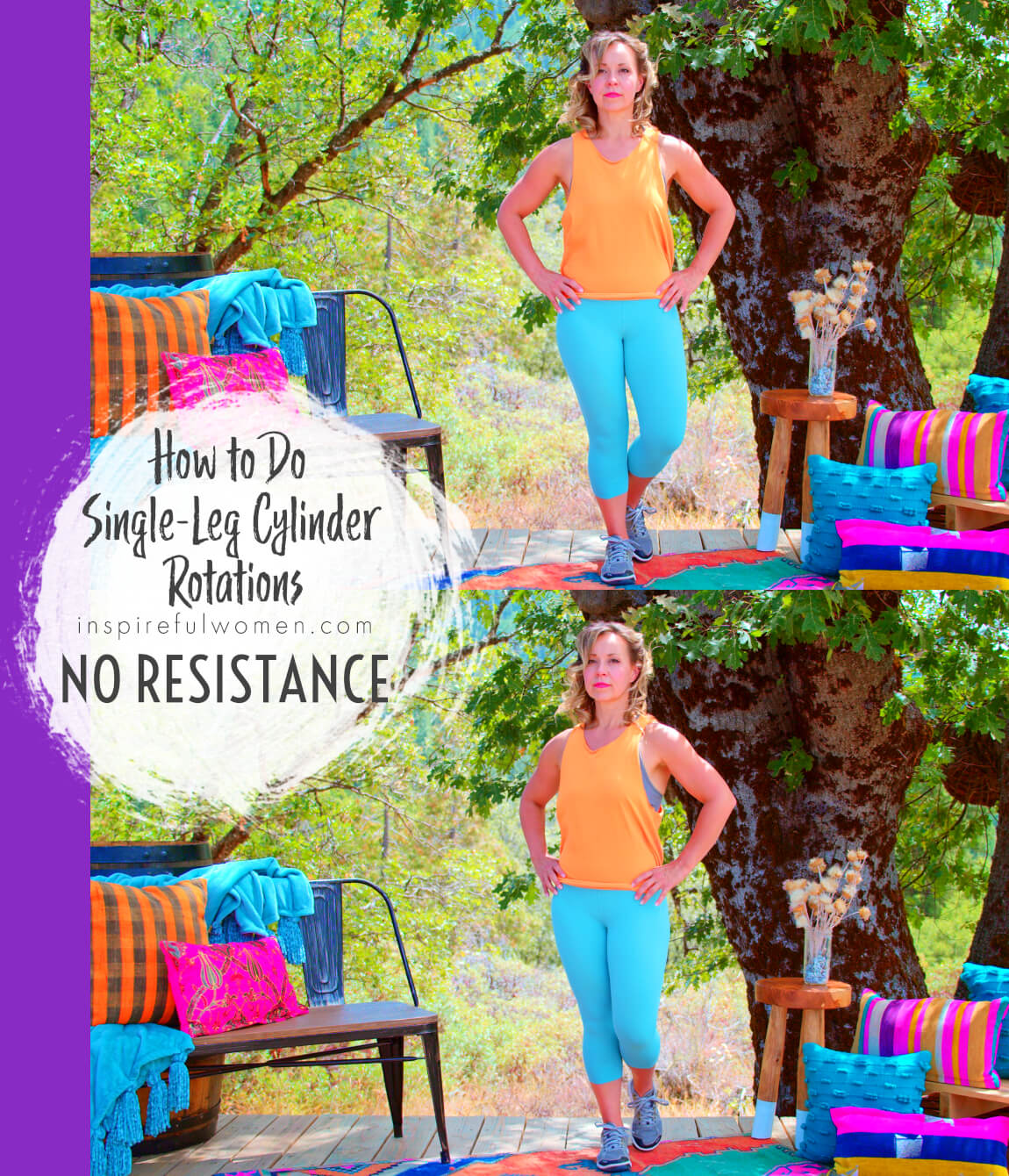
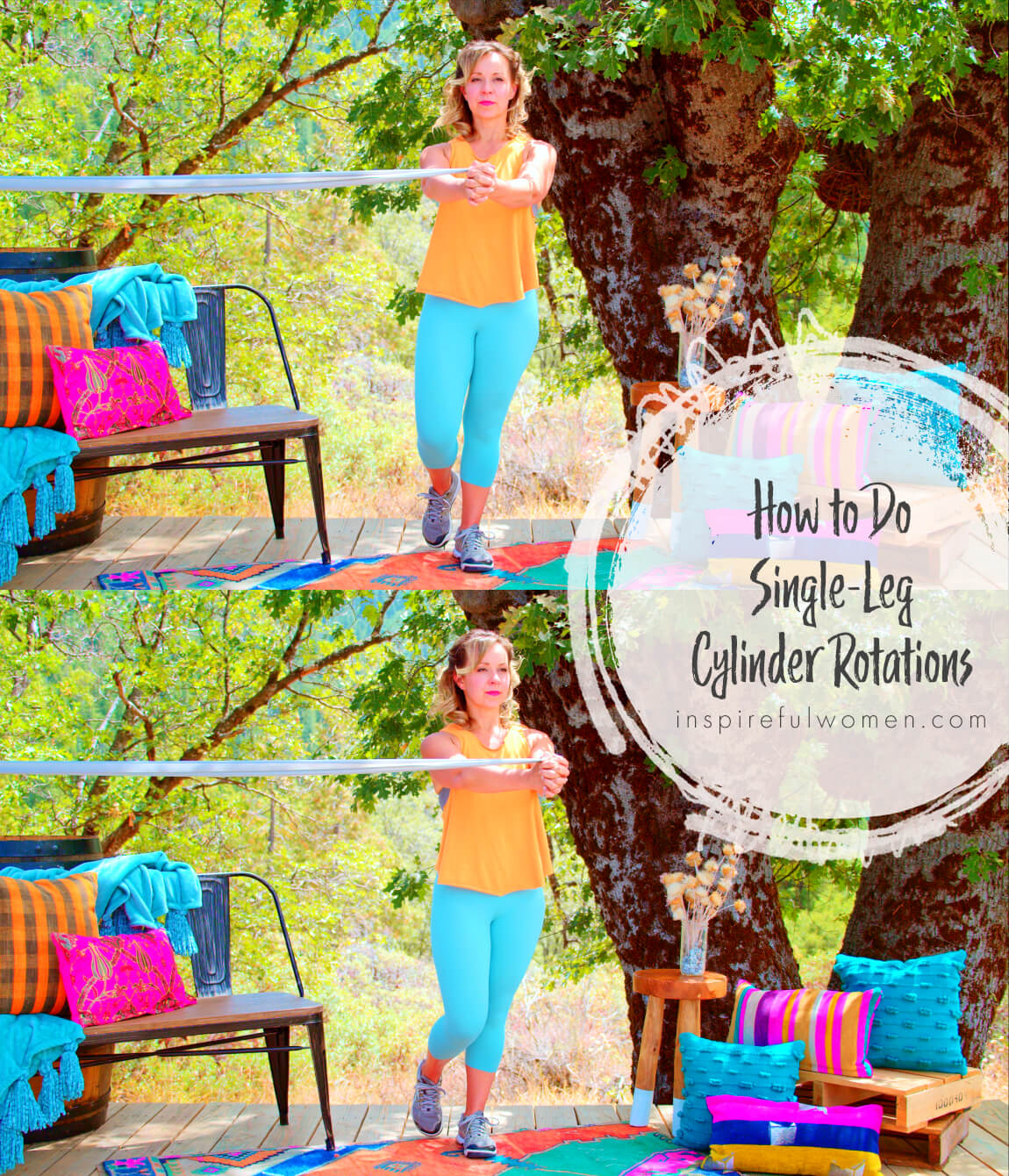

COMMON MISTAKES
COMMON MISTAKES
WHAT TO AVOID WITH THE Single Leg Torso Rotation
KEY TIP:
Guess what? Good news! Many avoids are the same for most movements. Once you learn the basics, there's really only a few extra avoids for each individual movement.
1. Avoid Not Maintaining Hips & Shoulders Level
AVOID: Not keeping your shoulders and hips level.
WHY NOT?
- This would indicate that you are not keeping the spine in neutral, you are side bending as you rotate.
- Repetitive spinal rotation under load (resistance of band) can cause soft tissue/joint irritation or damage over time.
WHAT TO DO:
- The shoulders and hips should stay level.
- The shoulders should be stacked over the hips.
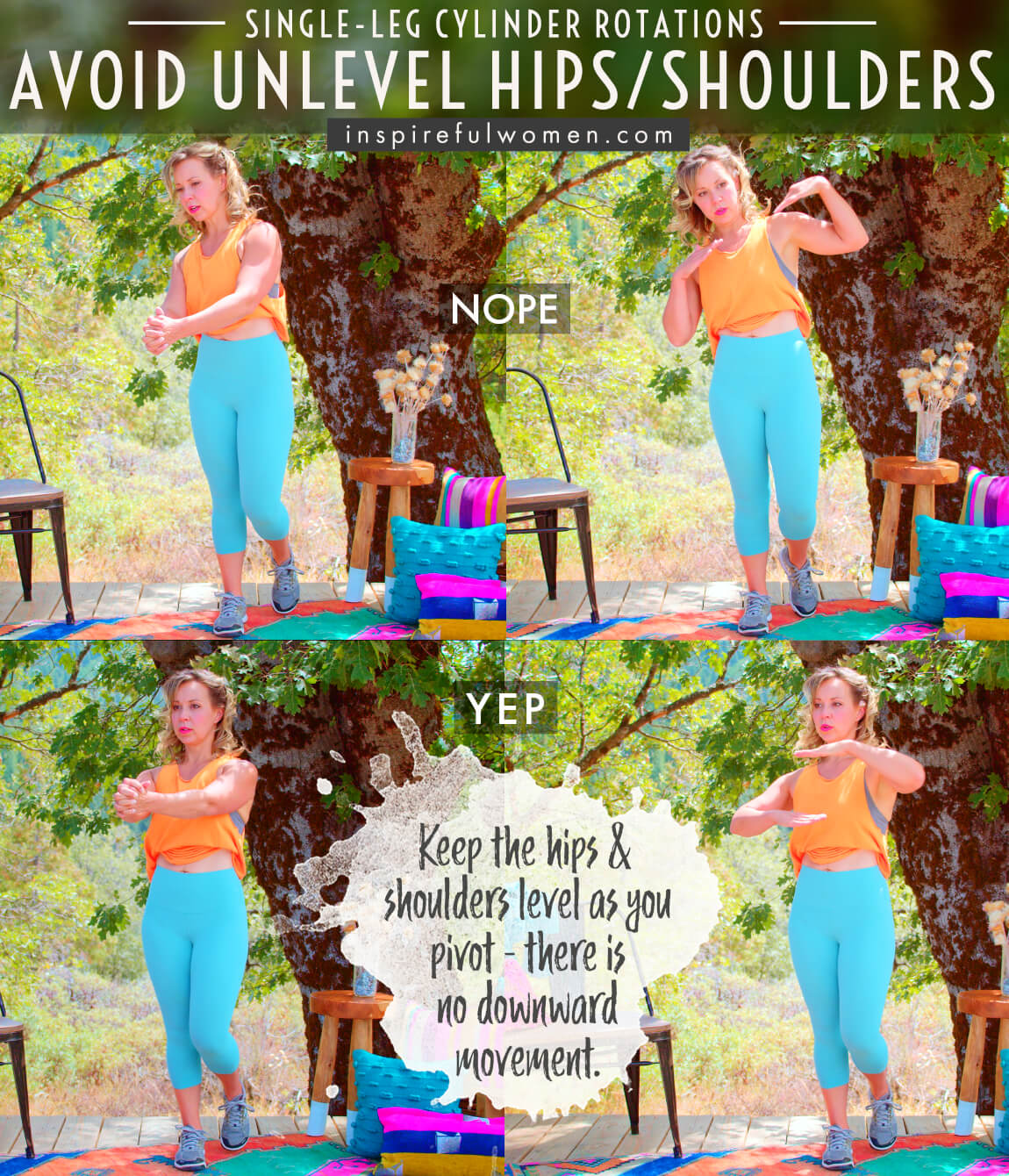
2. Avoid Misalignment of Leg
AVOID: Losing alignment of knee & foot.
WHY NOT?
- This will strain the ligaments on the inside/outside of the ankle & knee joint.
WHAT TO DO:
- One of the goals of this exercise is to work the muscles of the lower limb (foot/lower leg/knee/thigh/hip) in proper alignment to improve balance and stability.
- Keep the foot flat on the floor, without rolling in or out, weight equally distributed on the two sides of the ball of the foot and the heel..
- Keep the lower leg/knee/thigh in line.
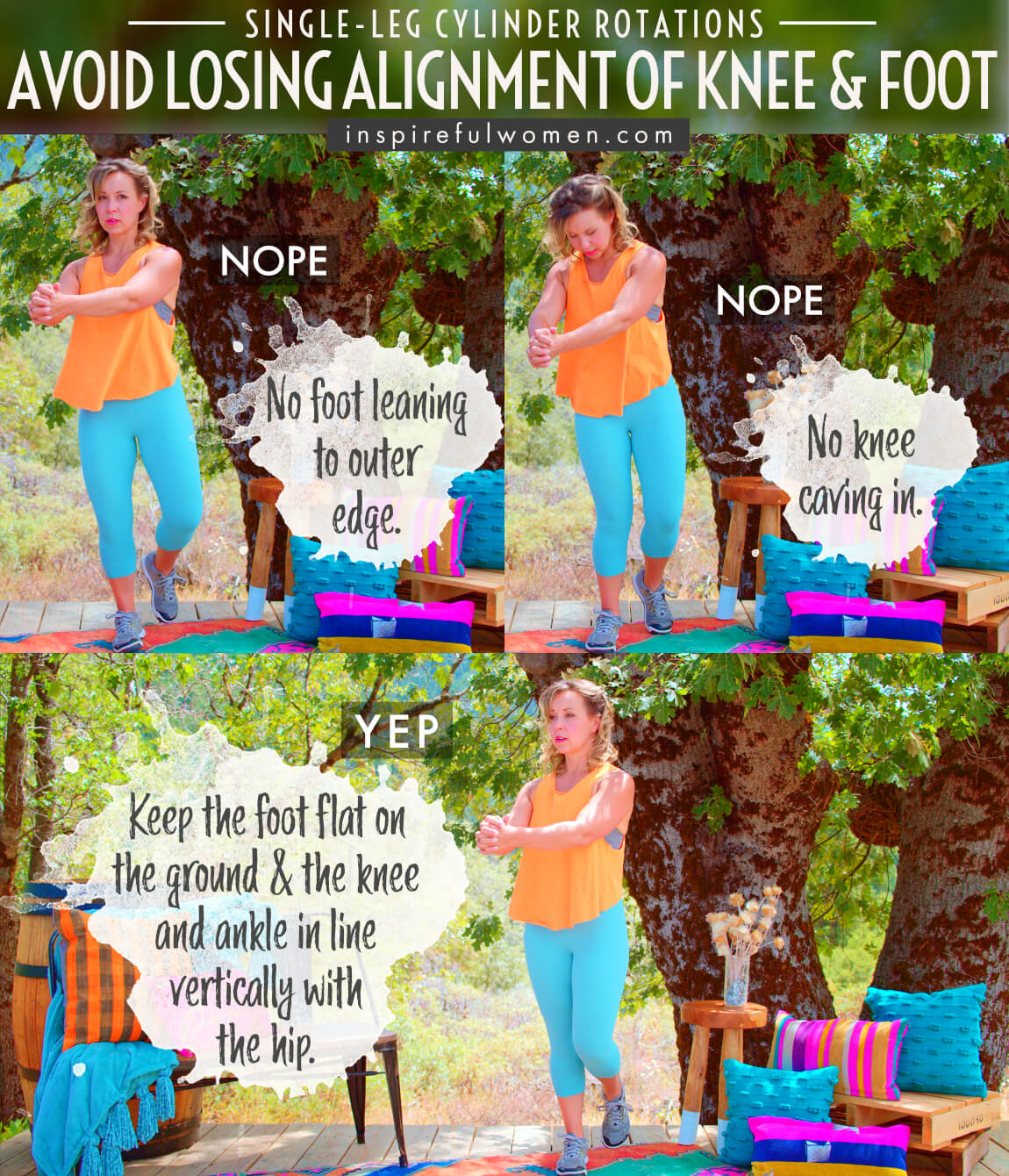
3. Avoid leaning body
AVOID: Leaning the body.
WHY NOT?
- It is common to lean away from the anchor to help pull against the resistance of the band pulling you off balance.
- Be aware of your alignment to get the full benefit of the exercise.
- This decreases muscle activity and uses body weight to help pull the band..
WHAT TO DO:
- Keep the knees soft and the motion isolated to the hip joint.
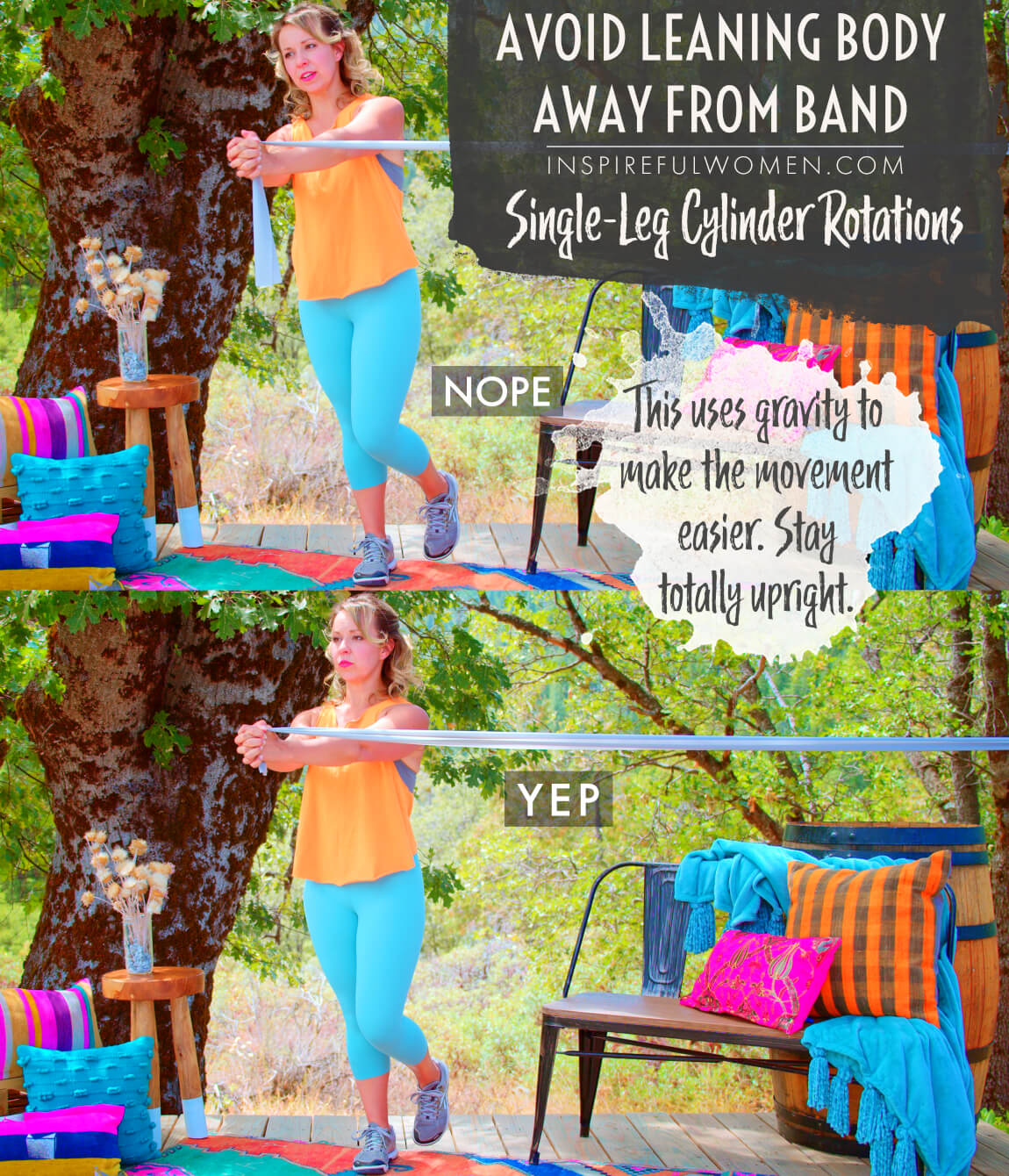
4. Avoid Moving Arms Rather Than Rotating at Hips
AVOID: Letting your arms rotate.
WHY NOT?
- This is a challenging exercise and it is easy to let the arms move as the band pulls on them.
- This decreases the muscle activity
WHAT TO DO:
- Keep focused on keeping the hands at the midline of the chest.
- Use less resistance.

5. Avoid Locking Knees
AVOID: Locking the knee of the weight-bearing leg.
WHY NOT?
- This can make it difficult to keep the low back a neutral position.
- Not maintaining a neutral spine position can lead to injury or muscle strain.
- Can be hard on the knee joint if the joint is locked out.
- It will decrease the amount of muscle activation in the legs.
- It also tends to make it more difficult to move smoothly - the movement is more mechanical.
WHAT TO DO:
- Keep the knees soft with a slight bend.
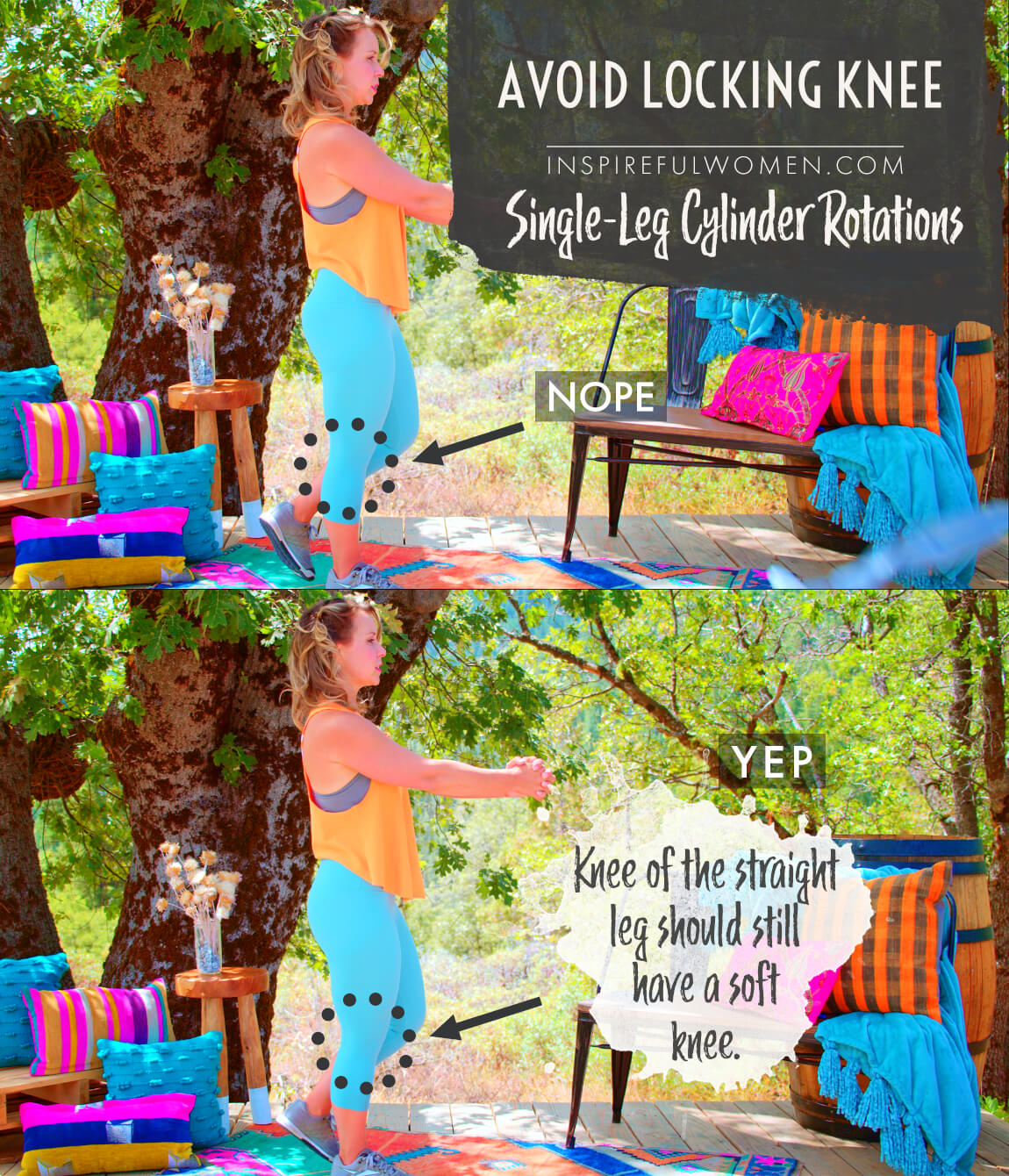
WHAT WE'RE DOING TODAY
WHAT & WHY
BENEFITS OF TRAINING THE Obliques
WHAT
I personally feel this one takes a little breaking down to get. At least it did for me!
The basic idea is that we’ll be thinking of our whole torso- head to shoulders to pelvis, as 1 cylinder and we’ll turn, or rotate, our whole torso as one piece, either to the right or left a little. The idea is that our shoulders and pelvis will turn together - we don’t want just our pelvis turning, or just our shoulders turning. They move together. Doing this will mean that our oblique muscles- muscles that are a part of our core, will be working hard to prevent our spine from twisting when we do this movement.
In this case, what is achieving the movement is actually our lower body - our legs. We view this as a core exercise though because as our strong lower body rotates us towards the right or left, we have to use our oblique muscles to make sure our whole torso goes with it. If they didn’t do their job, our hips would turn towards the right for instance, but our shoulders wouldn’t go with it and would still be facing forward - when the hips are on one place and the shoulders are facing another way, that means we’ve got a twist in our spine going on.
Horizontal Cylinder Rotations are a total body exercise focusing on using the core muscles, especially the obliques to stabilize the spine. The movement is done in standing, holding the spine in neutral still while using the lower body to push the torso into rotation - rotating at the hips. The legs are the prime movers, generating the force needed to rotate the torso against the pull of the band. The core muscles work to hold the spine in a neutral position as it pivots around the leg. This exercise is easily adjusted to challenge everyone from the beginner to advanced levels of difficulty.
WHY BOTHER DOING IT?
WHY
WHY DO WE EVEN CARE?
TO EVERYTHING (TURN, TURN, TURN), THERE IS A SEASON (TURN, TURN, TURN) AKA IMPROVES OUR STRENGTH AND ABILITY WITH WHOLE BODY ACTIVITIES THAT INVOLVE TURNING
While this exercise won’t improve our ability to sing this popular classic song by the Byrds (you are totally singing in your head right now aren’t you?), it WILL help you do heavy-duty activities (grunt work type stuff) that involves rotating - I like to say turning because I grasp that word better.
This movement is used in many common activities that involve planting the legs and driving off of the ground as the power from the legs is transferred up to the arms - shoveling, vacuuming, raking, and also recreational activities like swinging a golf club or tennis racket. The obliques are challenged in this exercise to prevent the low back from rotating as the entire torso rotates in one segment. The core muscles are working to prevent rotation.
CREATES A STABLE SPINE THAT PREVENTS INJURY TO OUR LOW BACK
The obliques lie on the sides of the torso wrapping around to the back and front. Their job is to rotate and to prevent rotation of the lumbar spine, to increase the stability of the spine, they can also bend the spine forward and help in moving the pelvis and ribs. The obliques work together with the other core muscles to stabilize the spine. Too much movement in the spine during daily activity can cause small (or large) amounts of damage to the soft tissues and joints. Over time this can cause pain and injury to the spine. It is surprising how many people have back pain that have no history of injuring their back. The wear and tear on the structures of the spine over time add up, and eventually give out.
Rotation, especially under load and when combined with flexion, is one of the main causes of injuries to the discs of the low back. Training the core to maintain a neutral spine during rotating activities can help prevent injury to the lumbar discs.
EVERYDAY LIFE
EVERYDAY LIFE &
MUSCLE FUNCTION
HOW WE USE OUR OBLIQUES IN EVERYDAY LIFE
1. STABILIZE THE SPINE IN NEUTRAL DURING: THE EXTERNAL AND INTERNAL OBLIQUES ALONG WITH THE TRANSVERSE ABDOMINIS WILL ACT TO COMPRESS THE ABDOMEN AND STABILIZE THE SPINE
- Taking dishes out of dishwasher or dryer
- Lifting and moving heavy objects from one side to the other
- Pushing a stroller, or wheelbarrow around a corner
- Carrying items on one side
- Bending forward
- Gardening
- Shoveling, raking, sweeping, vacuuming
- Golfing, tennis
SCIENCY STUFF
ALLLL MUSCLES & WHEN
ALL MUSCLES WORKING & WHEN DURING THE Single Leg Torso Rotation
The shoulder blades are positioned in and down the back (depressed and retracted - rhomboids, trapezius, latissimus, serratus anterior, pectoralis).
The internal and external obliques, and quadratus lumborum (other core muscles also but which ones and to what extent is dependent on how much resistance is used and the line of pull from the band) hold the shoulders and hips squared. The shoulder furthest from the band anchor needs to work to prevent being pulled across the chest (horizontal adduction) - the posterior deltoid, lateral deltoid, teres major, teres minor, infraspinatus will work isometrically to hold the arm in place; the mid traps and rhomboids will become more active to hold the shoulder back (retraction). The shoulder closest to the band anchor needs to work to prevent being pulled out to the side (horizontal abduction) - the pectoralis major, minor and coracobrachialis muscles work isometrically to hold the arm in place.
The muscles of the upper arm and forearm will work to stabilize the wrist and elbow. As the torso rotates the muscles will work harder to hold the position against the increasing resistance of the band.
The gluteus medius and minimis will be working isometrically to hold the pelvis level (preventing hip adduction) when standing on one leg.
The rotation of the torso is initiated by the rotators of the standing leg. When standing on the left leg and rotating to the left: the internal rotators- tensor fascia latae, gluteus minimus, medial hamstrings, and gracilis act concentrically to rotate the pelvis on the femur. When standing on the right leg and rotating to the left (external rotation): the obturator internus and externus, gluteus maximus, piriformis, superior and inferior gemellus, and quadratus femoris work concentrically.
The temptation will be to rotate through the lumbar spine, instead of using the muscles to prevent the movement. The obliques and the quadratus lumborum will contract to keep the spine from rotating or flexing. All of the core stabilizers (transverse abdominis, erector spinae, rectus abdominis, multifidi, iliopsoas, latissimus dorsi with a combination of eccentric, concentric and isometric contractions) keep the torso stable. The activation of the muscles will be changing with the amount of force and the direction of force as the torso rotates.
PIN IT FOR LATER!
